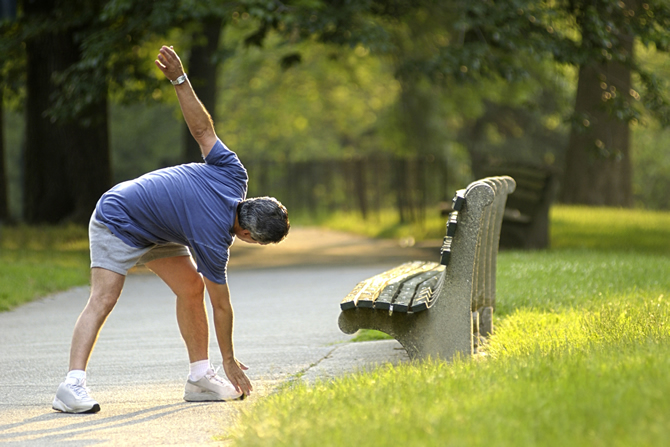
You would be no stranger to 'frozen shoulder' (or adhesive capsulitis), but it is a wonder how many people tend to consult the doctor only when the disorder strikes, as if there are no preemptive measures. I'm not going into the details of the cases of frozen shoulder here today, but I'm focusing on ways to prevent the disorder instead.
Not to be Slighted
As its name suggests, frozen shoulder decreases the level of motion of your shoulders, and you would experience immense pain when you lift, bend, rotate or stretch your shoulders. The shoulder joints are some of the most intricate joints in our body, and they also enable the highest level of movements. Such are the reasons why frozen shoulder entails negative effects on our daily life.
Natural Cure
A patient once asked me if frozen shoulder could heal by itself. Truth be told, there's a chance frozen shoulder can heal by itself in a year's time. Yet the belief somehow induces inertia, causing the patient to ignore the pain in the shoulders. In the end, frozen shoulder may spread to both shoulders.
That is not to say frozen shoulder can't heal by itself – but only with a consistently appropriate amount of exercise. Here are a few suggestions of rehabilitation therapy:
1. Rotation: Bend down and let your arms hang loose. Swing the problematic arm/shoulder from inside to outside, or draw circles from outside to inside. This motion can help activate the shoulder joint, but be sure to start with moderate strength to prevent injury.
2. 'Wall Climbing': Stand with your back to the wall, lift up your hands and grab the wall, climb upwards with your fingers to ensure the sides of your lower arms are lifted as much as possible. Mark the highest point you can reach, slowly relax your arms back to the original spot. Repeat the action with increased height at a time.
3. Shoulder Stretches: Lie down with your fingers intercrossing. With the palms in an upward position, put your hands behind your head and force the contraction of the inner arms, then stretch outwards.
4. 'Hair Combing': Either stand or lie down. Bend the problematic limb and move it upwards and downwards like you're combing your hair.
If there is no sign of improvement in your disorder after 30 repetitions of each of the above exercises three to five times a day, it's perhaps a better idea to consult the doctor.
Go the Chinese Medicinal Ways
I normally use acupuncture to cure frozen shoulder. The main acupuncture point is not on the shoulder but the 'tiao kou' acupoint on the leg. From there I'll insert a needle in the 'cheng shan' point, which would then cause the patient to feel a numbness in the calf and then the ankle. It's called opposing acupuncture, which unblocks meridians to resume full motion of stiff joints. The combination of moderate exercise and local acupuncture can help further soothe pain and inflammation for patients. If, however, symptoms of frozen shoulder are yet to retreat, I'll consider fire cupping to improve blood circulation in the shoulder and rid it of internal dampness.
A Myriad of Chinese Medicinal Therapies
There's a great host of Chinese medicinal therapies to explore, if you're interested. But for the time being, start exercising, because even the smallest amount of exercise can be an amazingly effective therapy in itself.
Yim Yiu-kin
Registered Chinese Medicine Practitioner
National TCM Practitioner, China
National Senior Beautician, China
National Chiropractor, China
Bachelor in TCM, Guangzhou University of Chinese Medicine
Master of Acupuncture, Guangzhou University of Chinese Medicine
Doctorate Student of Acupuncture, Guangzhou University of Chinese Medicine
(This article is the personal opinion of the author, and does not necessarily reflect the views of Hong Kong Registered Chinese Medicine Practitioners Association or Hong Kong Housing Society.)